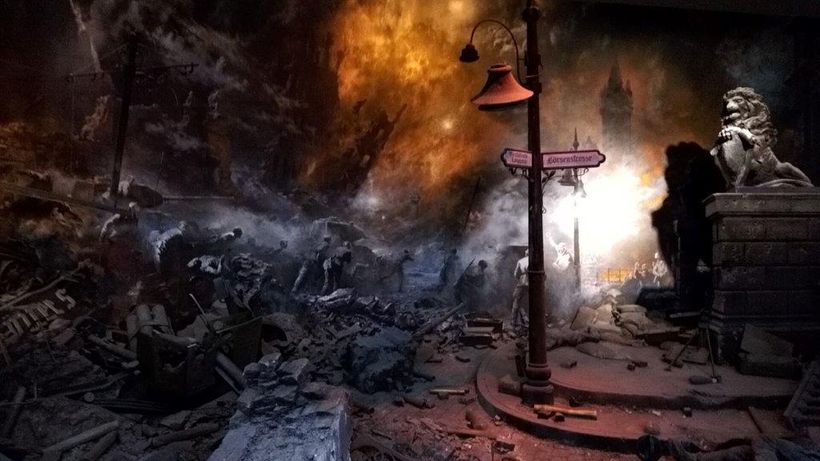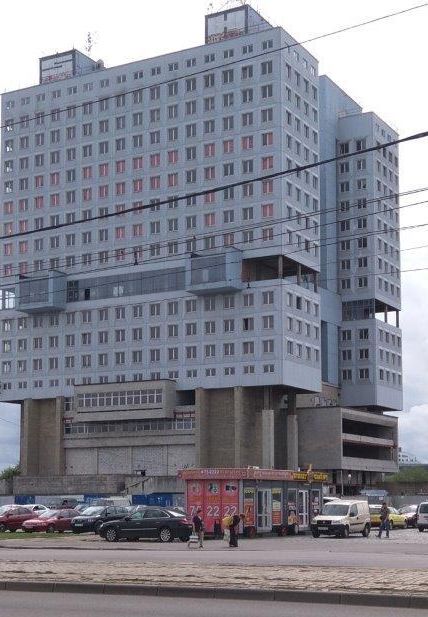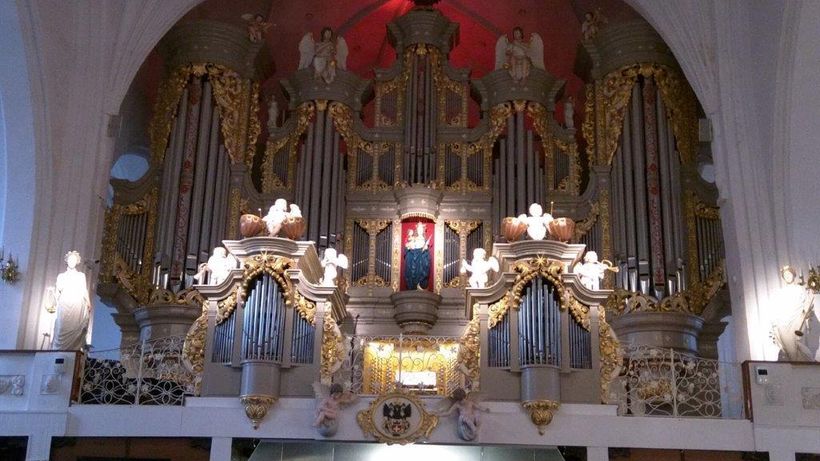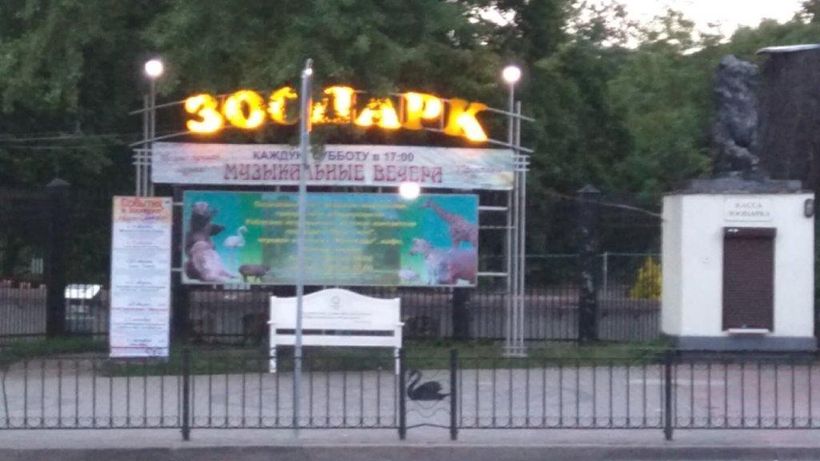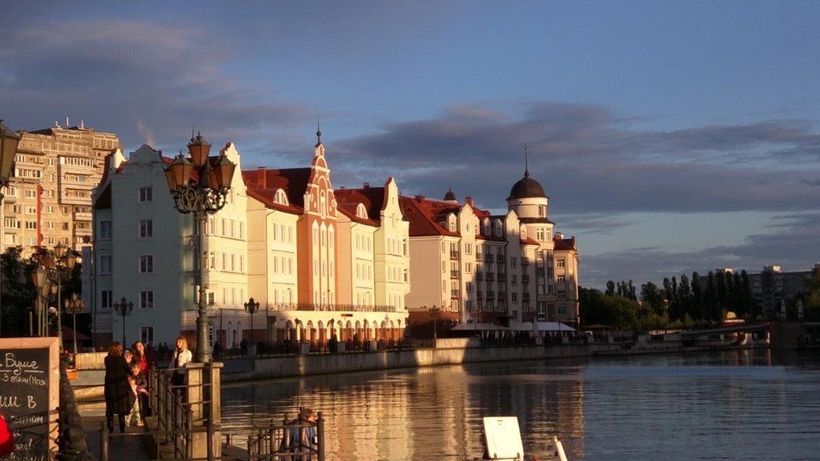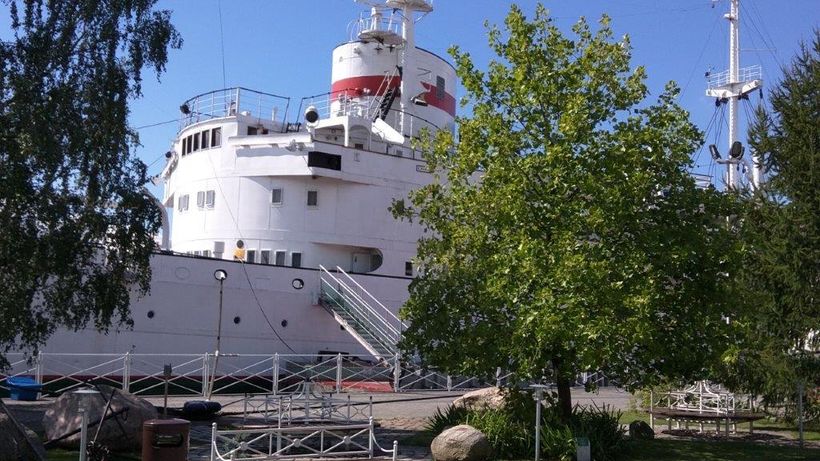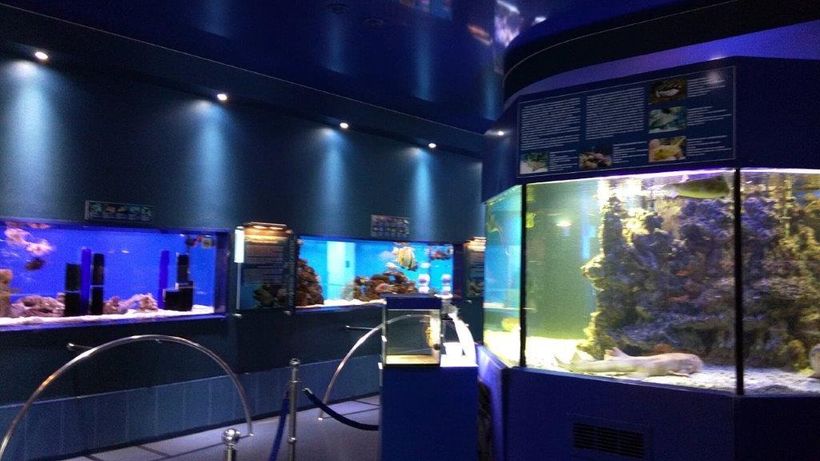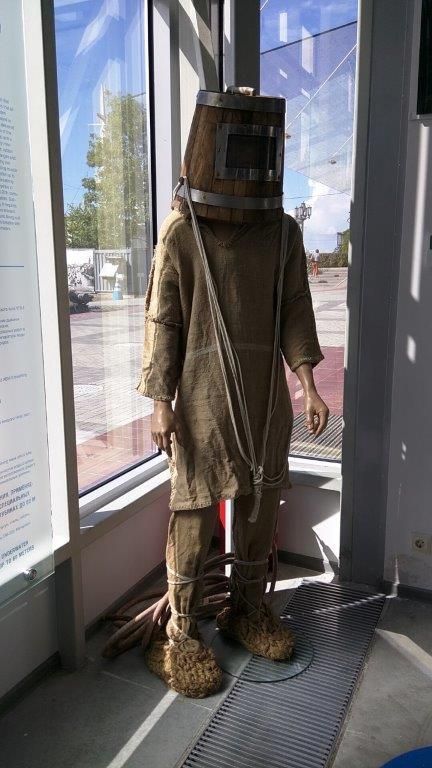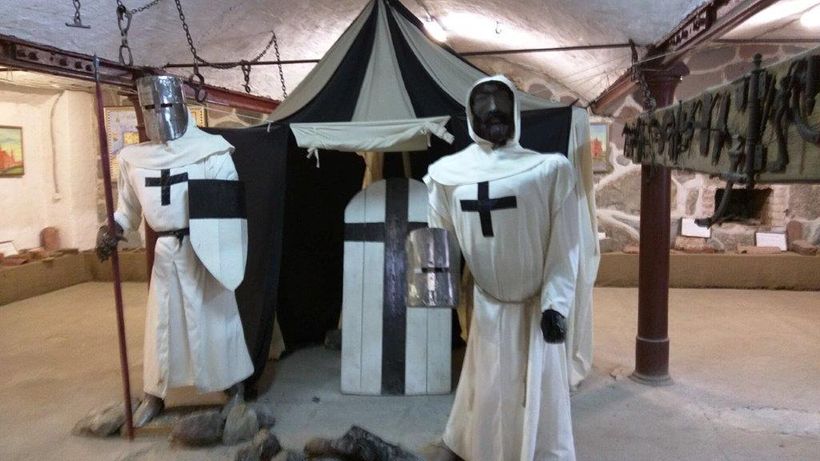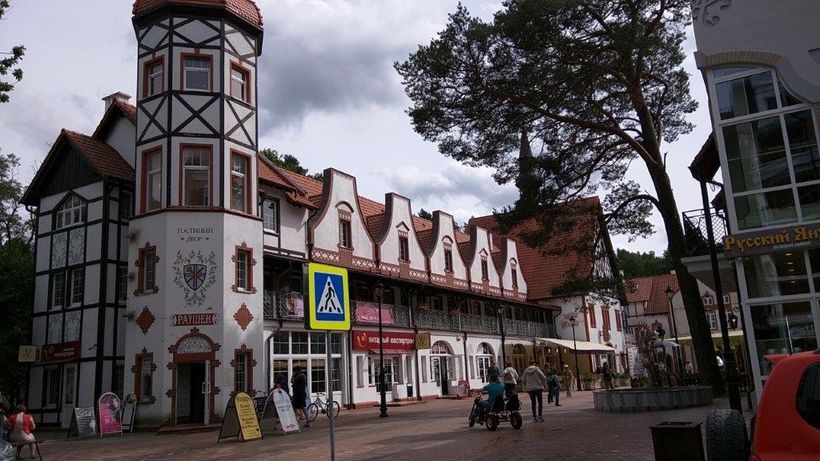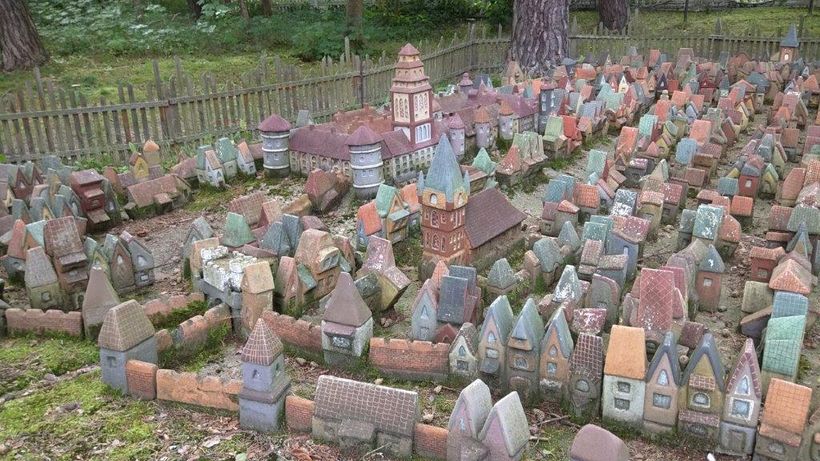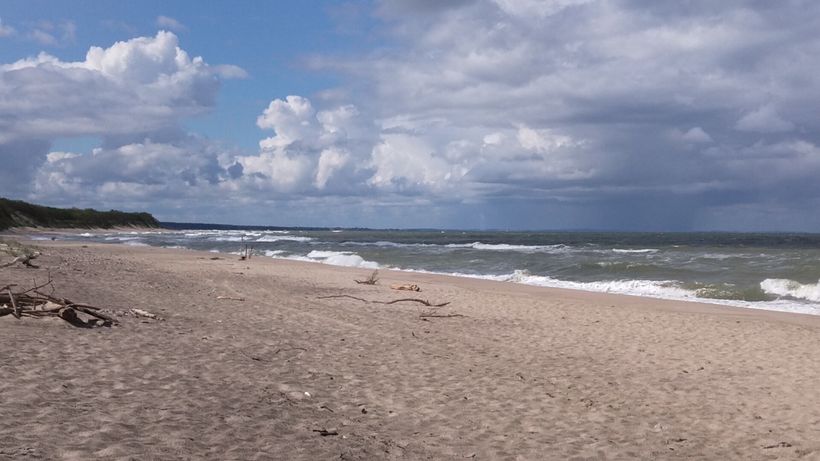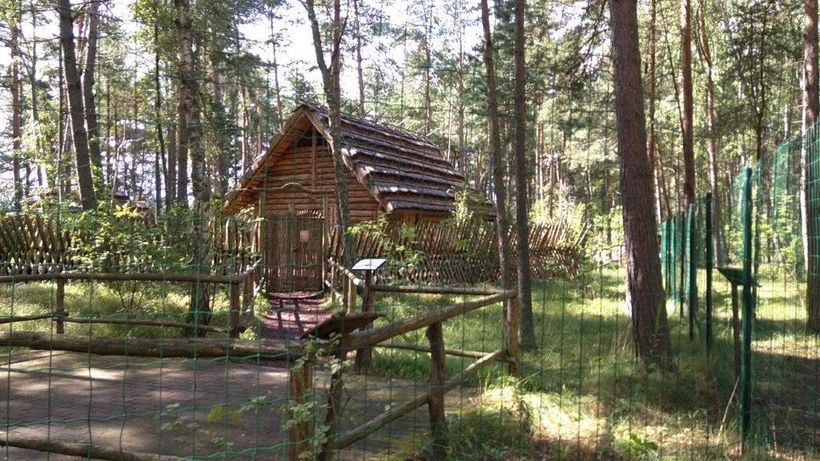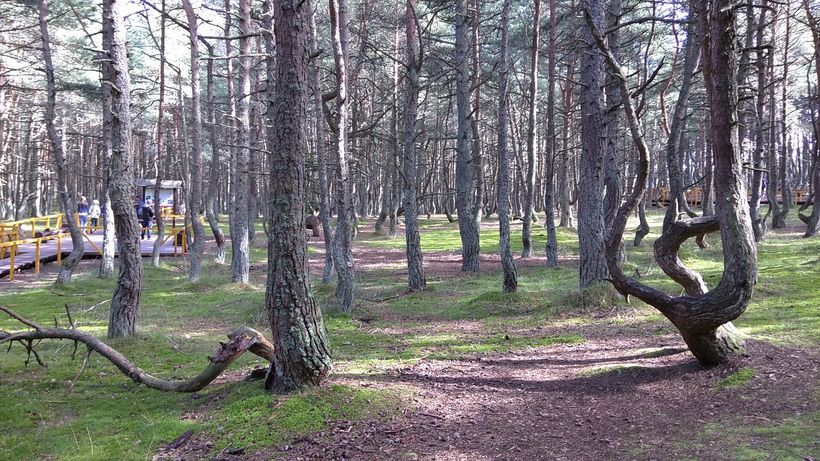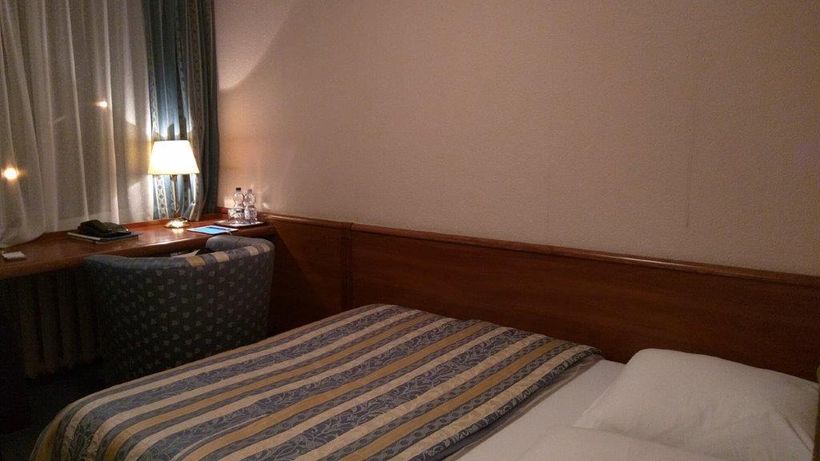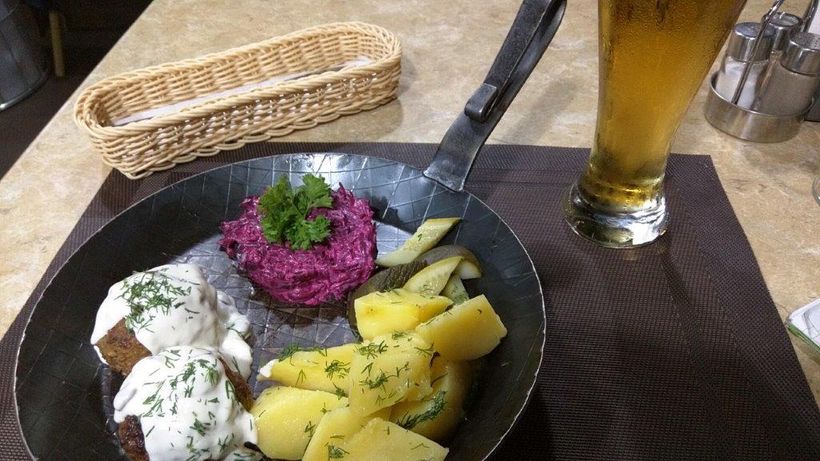Woody Allen, German “Gold,” and Giveaway Prices in Russia’s Pocket Enclave
A theater complex in the center of Kaliningrad may seem like an unlikely place to find a pair of bronze eyeglasses mounted in tribute to Woody Allen, but “Woody” was born Allan Konigsberg and before the Russians seized the region, this city wasKonigsberg the original capital of Prussia before Berlin. Now renamed for one of Stalin’s henchmen, Kaliningrad is the moniker of both the city and the tiny enclave or oblast nestled between the Baltic seacoast states of Poland and Lithuania, a mini Russian outpost rich in modern and historic lore.
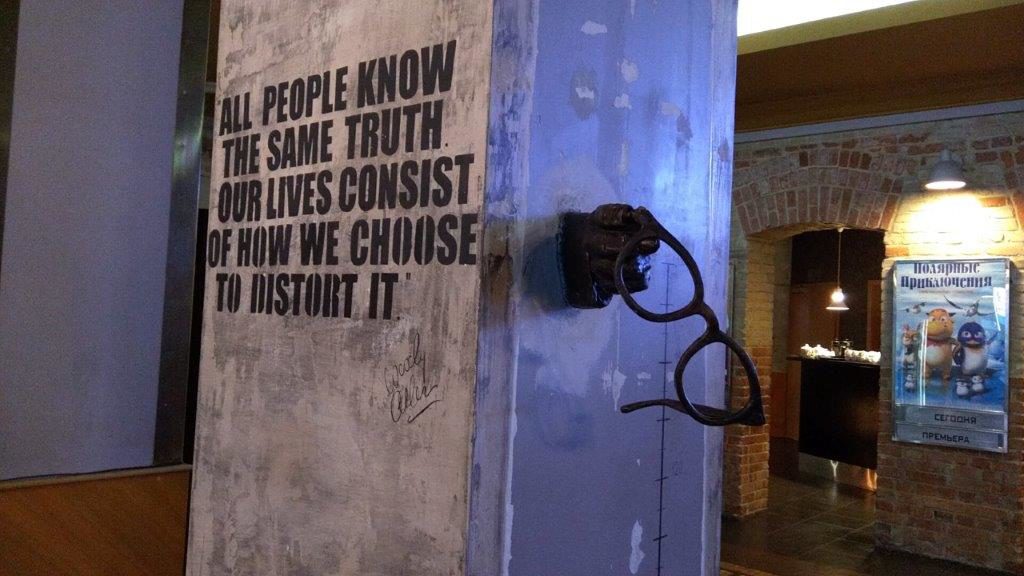
A mounted pair of bronze eyeglasses is a tribute to Woody Allen in Kaliningrad’s Zarya cinema complex
For orientation, it is helpful to stop first in the Bunker Museum, the actual underground outpost which was Nazi headquarters during the 1944-45 Konigsberg Offensive when Russia and the allies were trying to stop the German army. It is the location where German General Otto Lasch surrendered to the Soviet terms of surrender. The entire historic city had been bombed almost to extinction before he gave in. While the Russians commended his decision to avoid further casualties, he was sent back to Germany where he served ten years in prison for his failure to hold the important supply depot seaport.
THE MONSTER
Destruction continued when the German region was taken over by the Soviets. Germans were forced to move out and Russians moved in. Traces of the German past were destroyed and despite protests, in 1968 Leonid Brezhnev ordered the demolition of the historic Prussian Konigsberg Castle. In its place was planned the “House of Soviets” office building to symbolize Soviet power, but it has never been finished and nicknamed “the Monster” it stands abandoned in the center of town.
Also almost totally destroyed by bombs, the Cathedral has been rebuilt on a park which is a sculpture garden and the site of outdoor festivals and concerts.
KALININGRAD CITY SIGHTS
Besides a collection of statues on Kant Island, monuments are found throughout the city.
One of the world’s important ocean museums lies along the banks of the city’s Pregolya River. Visitors can visit a scientific expedition vessel and a pre-atomic submarine. Aquarium and ocean depth exhibits are housed within the museum headquarters.
Amber is a mainstay of the Kaliningrad economy and supplies 80% percent of the world’s “German gold.”. Housed in a tower one of the Dohna Towers, the Amber Museum illustrates the processing, types, and treasures of the petrified resin.
THE BALTIC COAST
Twenty to thirty miles outside the city of Kaliningrad, still within the oblast Kaliningrad, are seaside vacation resorts: Yantarny,Svetlogorsk, Zelenogradsk. Tourists flock to them from Germany, Moscow, Belarus, to enjoy swimming, spas, shopping.
THE SPIT
Stretching almost 50 miles and as little as 1300 feet wide, Kurshskaya Kosa , the Curonian Spit separates the Baltic from the Curonian Lagoon. Shared with Lithuania, it is a UNESCO Heritage Site of forests, hiking trails, museums, and endless sand beaches. Near extinction when 19th-century settlers overcut the forests, replanting has stabilized it with such a mass of trunks that you almost can’t see the trees for the forest!! The three major villages and parks within the Russian section are popular tourist sites.
VALUE
The exchange is about 65 rubles to the dollar and rubles go far. Hotels, meals, taxis, souvenirs all are good value for the money. Bus trips within town cost a few cents and around the oblastrarely cost more than $1. Museums charge $1-$4. Large bottles of beer cost under $1.
TO VISIT
As this is part of The USSR, travelers must obtain a Russia visa
Travelers can fly to Khrabrovo Airport in Kaliningrad.
Transit is easy. Local and intercity buses are numbered, schedules are posted, and buses arrive on time.
Taxis are very inexpensive ($1-$6 anywhere within Kaliningrad and one 30 km trip on the Spit took half an hour and cost $6).

